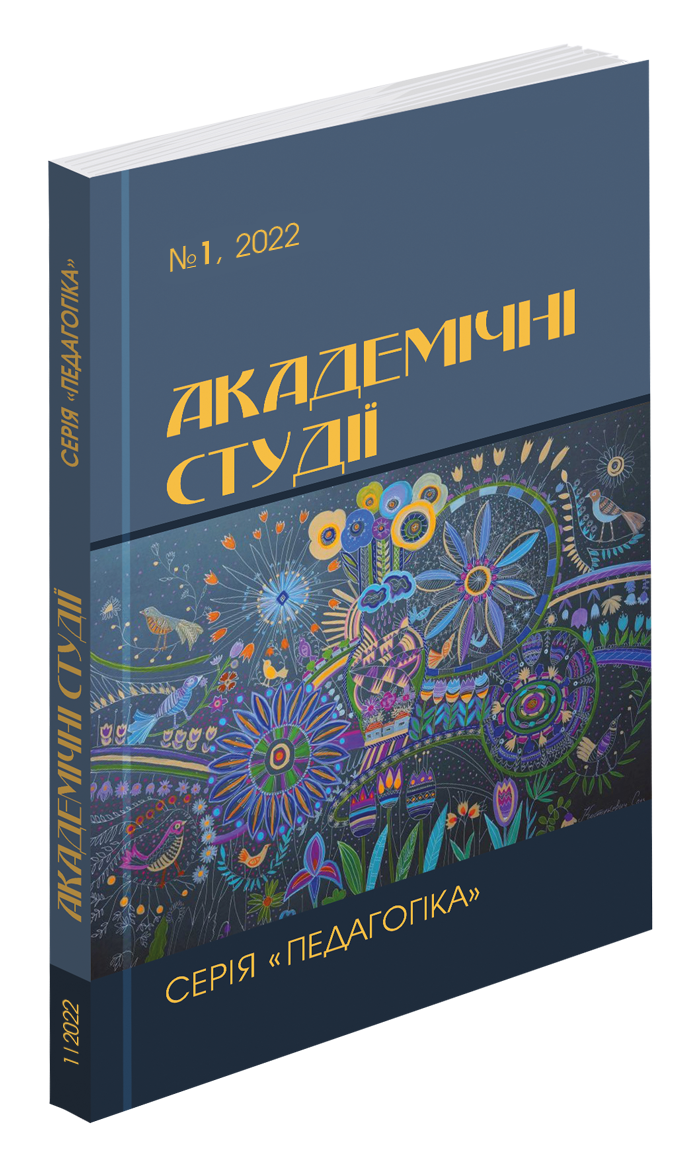Abstract
The scientific research highlights the relevance of the need for implementation of nonviolent communication method (empathic communication or communicative cooperation), which was developed by Marshall Rosenberg, that is based on empathy in the future teachers’ professional activity. The implementation of this method within the concept of NUS is conditioned by the attention to the development of emotional intelligence of future citizens. In the wartime, which is currently happening in our country, the significance of this method is increasing as well as the need of mindful and careful communication with the students, fosterlings, their parents and fellow teachers. The article outlines the theoretical foundations of the issue, the concept of «nonviolent communication» is clarified in particular and the practical steps of its implementation are determined. The need to consider the process of communication as a whole is substantiated in connection with verbal, nonverbal and emotional components. Such principal of studying the practical aspect of language focuses on the personality, perception and transformation of the information by an individual, increases his/her level of empathy and thus, facilitates the communication and promotes its effectiveness. Application of the method of correct communication enriches and expands the process of speech perception by future specialists, it also activates the creativity, teaches critical thinking, allows to draw attention to psychological peculiarities of interlocutors, their inner state, provides with resources for implementation of safe communication with students, which is extremely important in the wartime. Apart from motivating toward national identity, this method contributes to the formation of the holistic picture of the world and oneself in it. It is convincingly being proved that communication is of extreme importance not only for the personality’s harmonious development but also for realization of his/her professional tasks.
References
Dzierzgowska I. Nauczanie nauczycieli. Podrecznik dla edukatora. – Warszawa, Wyd. Fraszka Edukacyjna, 2001. 173 s.
Керрі Паттерсон, Ел Свитцлер. Важкі діалоги. Що і як говорити, коли ставки високі / Керрі Паттерсон, Ел Свитцлер Джозеф Гренні, Рон Макміллан. К., 2018. 256 с.
Леонтьев А. А. Деятельность и общение. Вопросы психологии. 1979. № 1. С. 121–132.
Маршал Розенберг. Ненасильницьке спілкування. Мова життя. Х. : Ранок, 2020. 256 с.
Мацько Л. І., Кравець Л. В. Культура української фахової мови. Київ : Академія, 2007.
Ніколаєнко С., Ніколаєнко Св. Проблема спілкування як вид діяльності. Світогляд-Філософія-Релігія. К. : Інститут філософії імені ГС Сковороди НАН України, 2012.
Семеног О. М. Культура наукової української мови : навч. посібник. К. : ВЦ «Академія», 2010. – 216 с.
Черепанова С. О. Філософія освіти і педагогіка: цінності культури. Комунікативний етикет: Україна, Великобританія, Німеччина, Франція, Іспанія. Львів. 2007. – 392 с.
Шевчук С. В., Клименко І. В. Українська мова за професійним спрямуванням : підручник. – 3-є вид., випр. і допов. К. : Алерта, 2012. – 696 с.

